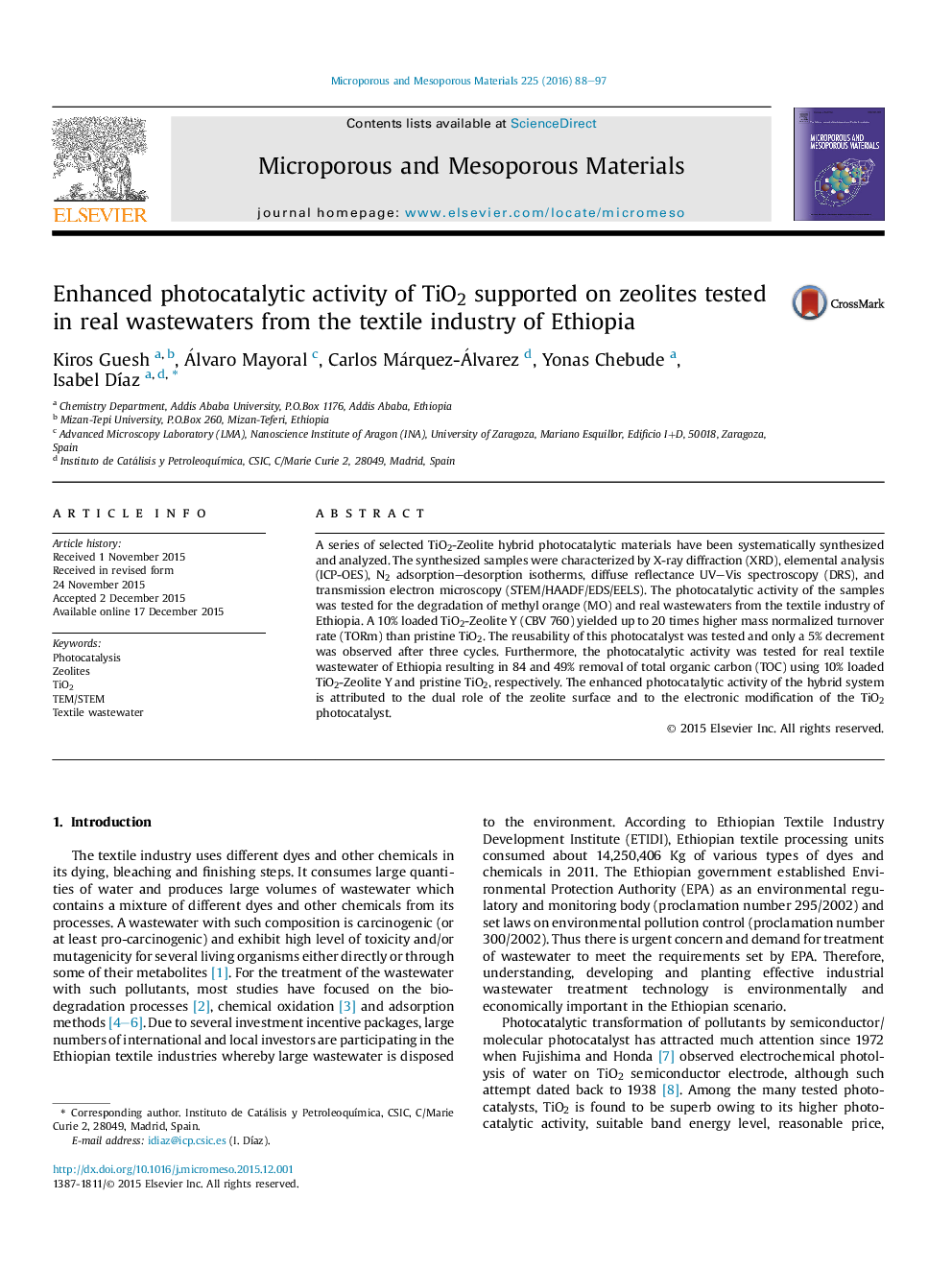| Article ID | Journal | Published Year | Pages | File Type |
|---|---|---|---|---|
| 72067 | Microporous and Mesoporous Materials | 2016 | 10 Pages |
•TiO2-ZY yielded 84% degradation of real wastewaters from the textile industry of Ethiopia.•10% TiO2-Zeolite Y (CBV 760) yielded up to 20 times higher TORm than TiO2.•PL emission indicates electron trapping species below the conduction band of TiO2.•TiO2-Zeolite materials have been systematically characterized by STEM/HAADF/EELS.
A series of selected TiO2-Zeolite hybrid photocatalytic materials have been systematically synthesized and analyzed. The synthesized samples were characterized by X-ray diffraction (XRD), elemental analysis (ICP-OES), N2 adsorption–desorption isotherms, diffuse reflectance UV–Vis spectroscopy (DRS), and transmission electron microscopy (STEM/HAADF/EDS/EELS). The photocatalytic activity of the samples was tested for the degradation of methyl orange (MO) and real wastewaters from the textile industry of Ethiopia. A 10% loaded TiO2-Zeolite Y (CBV 760) yielded up to 20 times higher mass normalized turnover rate (TORm) than pristine TiO2. The reusability of this photocatalyst was tested and only a 5% decrement was observed after three cycles. Furthermore, the photocatalytic activity was tested for real textile wastewater of Ethiopia resulting in 84 and 49% removal of total organic carbon (TOC) using 10% loaded TiO2-Zeolite Y and pristine TiO2, respectively. The enhanced photocatalytic activity of the hybrid system is attributed to the dual role of the zeolite surface and to the electronic modification of the TiO2 photocatalyst.
Graphical abstractFigure optionsDownload full-size imageDownload as PowerPoint slide
